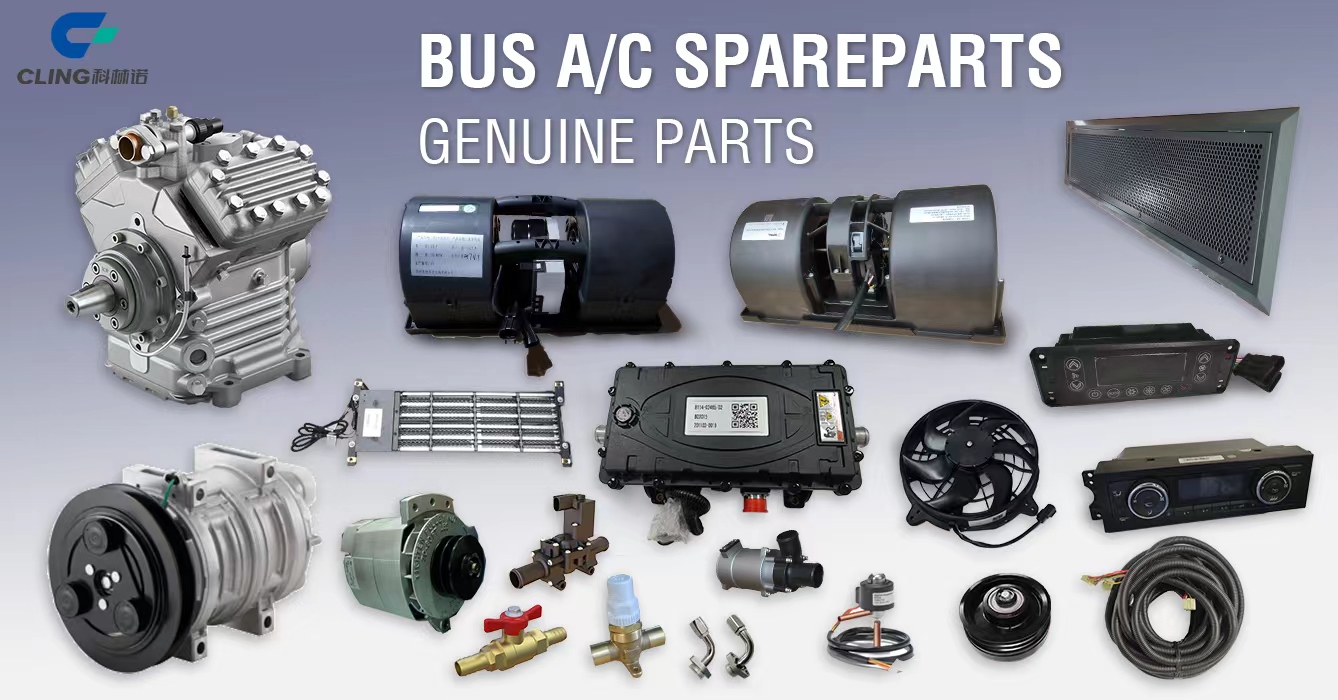-
Products
-
Engine Bus Air Conditioner
Engine Bus Air Conditioner

-
E-Bus Air Conditioner
E-Bus Air Conditioner

-
BTM System
BTM System

-
Refrigeration Unit
Refrigeration Unit

-
Defroster
Defroster

-
Integrated Thermal Management System & Heat Pump Product
Integrated Thermal Management System & Heat Pump Product

-
Accessory
Accessory
.jpg)
-
Engine Bus Air Conditioner
- About Us
- Support
- Contact Us

Bus air conditioning systems, also known as HVAC (heating, ventilation, air conditioning) systems, are designed to provide comfort to passengers and maintain a comfortable temperature in hot or cold weather.

In summary, a bus air conditioning system relies on multiple interconnected components working together harmoniously to deliver comfortable temperatures for passengers despite external weather conditions. Through continuous circulation, compression, condensation, evaporation, and expansion of refrigerant, along with precise regulation via various sensors and controls, these sophisticated systems significantly enhance travel experiences.
As a professional bus air conditioner manufacturer in China, Cling offers a wide range of air conditioning products for 6-25m bus, citybus, coach, school bus, shuttle bus, special vehicles etc at best cost-performance.
Bus air conditioning system is typically made up of several major components: compressor, condenser, evaporator, expansion valve or throttle tube, refrigerant, and electrical controls.
Compressor
Compressor is the key of the bus air conditioning system which is responsible for circulating the refrigerant. When the thermostat signals that cooling is needed, the compressor pressurizes and pumps low-pressure refrigerant vapor into the condenser.
Condenser
The high-pressure, high-temperature refrigerant gas enters the condenser after leaving the compressor. With the help of ambient air the heat from the refrigerant is transferred to the outside environment through fins around the tubes carrying the heated refrigerant. Due to the decrease in temperature and increase in pressure the refrigerant changes from a gaseous state to a liquid. When cooled enough, it moves on to the next stage.
Evaporator
After passing through the condenser, the cooled liquid refrigerant passes through an expansion device (expansion valve or throttle tube) that regulates the flow of refrigerant into the evaporator coil. Inside the evaporator, the warm cabin air comes into evaporator and meets the cooled refrigerant, causing it to absorb quantity of heat. At the same time, moisture air condenses on the cold surface of the evaporator, creating a dehumidifying effect inside the bus. After absorbing enough heat, the refrigerant turns back into a low-pressure vapor, returning to the compressor to repeat the cycle.
Expansion Valve Or Throttle Tube
Both devices serve a similar purpose; they control the amount of liquid refrigerant entering the evaporator.
However, the methods of operation are slightly different.
The expansion valve uses a diaphragm controlled by a bulb filled with refrigerant from the evaporator outlet. As the temperature at the end of the evaporator drops, less refrigerant flows through the valve, maintaining an optimal level of superheat within the evaporator.
The throttle tube maintains a constant restriction regardless of changing operating conditions, relying on a metering rod to adjust the flow rate based on the pressure difference across the throttle tube. While a throttle tube is a simpler design, it can be less efficient than an expansion valve under varying load conditions.
Refrigerants
Refrigerants are critical to the operation of any air conditioning system. They have unique properties that allow them to easily change phase at different temperatures and pressures. Older systems used R-12 (Freon), but it has been phased out due to environmental concerns. Modern systems primarily use R-134a, although newer generations of refrigerants with lower global warming potential, such as R-407C and R-410A, are becoming more common.
Electrical Controls
A variety of sensors and switches monitor system performance and ensure proper operation. The most critical of these are the temperature sensor, which measures the temperature inside the vehicle and sends feedback to the control module, and the pressure switch, which prevents the system from over-pressurizing. In addition, the climate control panel allows passengers to select desired settings such as fan speed, mode (e.g., floor, dashboard, defrost), and temperature. These inputs are processed by the electronic control unit (ECU) and the operation is managed accordingly.

In summary, a bus air conditioning system relies on multiple interconnected components working together harmoniously to deliver comfortable temperatures for passengers despite external weather conditions. Through continuous circulation, compression, condensation, evaporation, and expansion of refrigerant, along with precise regulation via various sensors and controls, these sophisticated systems significantly enhance travel experiences.
As a professional bus air conditioner manufacturer in China, Cling offers a wide range of air conditioning products for 6-25m bus, citybus, coach, school bus, shuttle bus, special vehicles etc at best cost-performance.
If you have any questions please don't hesitate to contact us.
E-mail: marketing@clingac.com
Phone: +86 18736032501
Get A Free Quote!
x















 Youtube
Youtube
 Facebook
Facebook
 Linkedin
Linkedin
 Instagram
Instagram